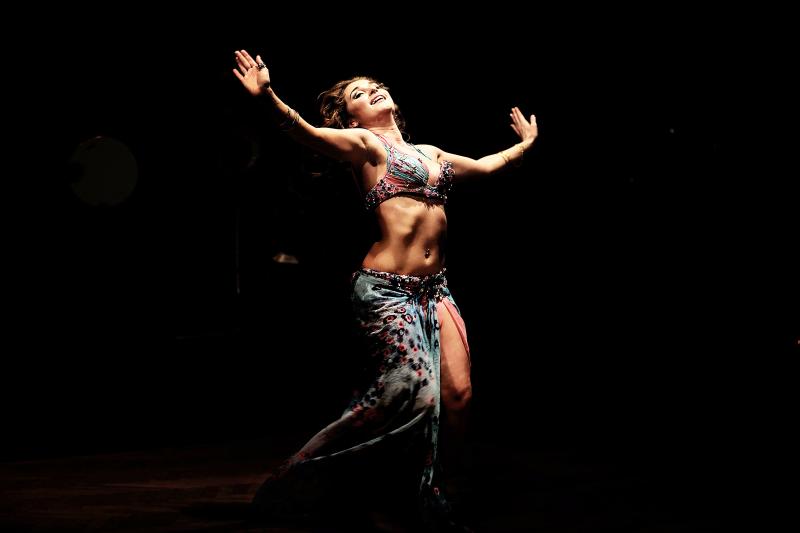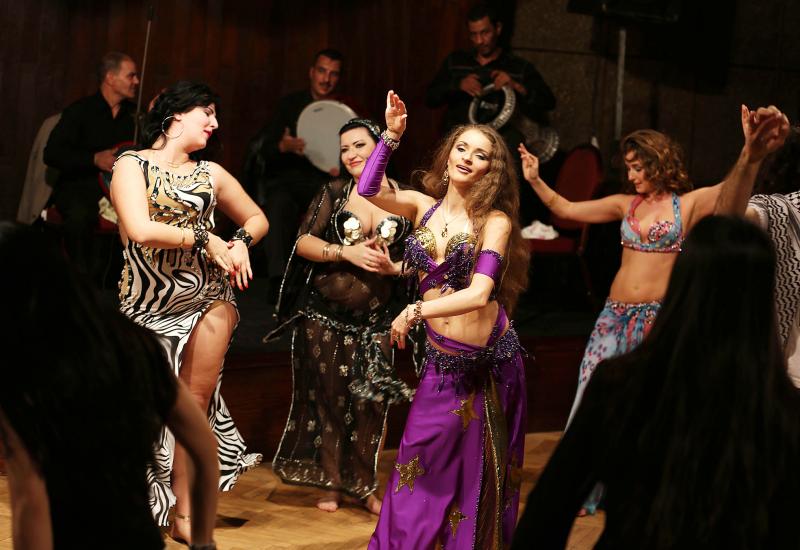As a trickle of tourists slowly returns to Egypt, the floating nightclubs along the Nile are back in business.
And belly dancers are once again in high demand. The glitzy late-night shows attract visitors from all over the world, and especially from the Gulf’s Arab states, with dancers in revealing outfits performing with full traditional musical backing.
But while many dancers are happy to be getting back to work, there is growing disquiet that the artform is becoming closely associated with drinking and nightclub culture. They feel that the belly dance, which is deeply rooted in Egyptian history, has been increasingly seen as more akin to strip dancing, and that this association is making life difficult for the dancers.

Photo : AP
“What we’re seeing more and more of is this dance being hidden in these underground cabarets and bars,” says Egyptian dancer Amie Sultan. “A normal Egyptian family who wants to go to the theater and watch a show will never see this dance.”
As part of a campaign to change perceptions of the traditional artform, Sultan has launched a bid to have Egyptian belly dance included on UNESCO’s Lists of Intangible Cultural Heritage.
Although the dance is hugely popular — it is common to see belly dancers at Muslim and Christian weddings and star performers are celebrities in their own right — Sultan says they are seen more often as sex workers than artists. In Egypt’s conservative society, dancers face intense social stigma, and even risk prosecution for wearing outfits deemed too promiscuous by the authorities.

Photo : AFP
“A mother will hire a dancer for her son’s wedding,” Sultan says, “but she’ll never let her daughter become a dancer.”
CULTURE SHOCK
Born in Singapore, Sultan began her dancing career in ballet. When she moved her focus to belly dance in 2014, she was shocked by a culture where performers compete to wear more revealing costumes and often undergo cosmetic surgery and breast augmentations.

Photo : AFP
“I don’t even like the term ‘belly dance,’” says Sultan, who now teaches what she prefers to call Egyptian dance.
Belly dance, she says “is a term that was invented by the French colonialists in Egypt. They took it back to France and called it danse du ventre (dance of the stomach), but we never call it that in Arabic.”
Her program for young dancers is run along similar lines to ballet training. Students are taught to dance in the style of stars from Egypt’s “golden age” of cinema, such as Samia Gamal and Naima Akef, and to distance themselves from the more sexualised styles found in nightclubs, where Sultan says the traditions have been diluted with other dance styles.

Photo : AFP
Associating belly dance with sex work can make life difficult for dancers. Women trying to break into it as a career risk alienation from their families, insecure accommodation at the mercy of suspicious landlords, and sexual harassment.
Unscrupulous managers have been known to push dancers into sex work.
Dancers can also fall foul of the government’s strict regulations on attire. In 2019, a Russian woman was sentenced to a year in prison for breaching the dress code.
STIGMATIZED
Dance teacher Ali Abdelfattah says belly dancers are stigmatized in a way that doesn’t affect other professional dancers. “The ballet is seen as something graceful,” he says, “but when people see belly dancers, it throws up a lot of question marks. It’s not a good image.”
Abdelfattah says that most of his students attend his workshops without their families’ knowledge.
Because of the difficulties faced by Egyptians, many of those dancing in clubs, cabarets and at weddings come from abroad, especially from Russia and South America. Lurdiana, a Brazilian dancer working in Cairo, says she was recruited to belly dance in Sharm el-Sheikh. “They need dancers here,” she says.
Even within the industry, Egyptian dancers face difficulties. Lurdiana’s former manager once explained his preference for foreign dancers.
“He said that if an Egyptian girl works as a belly dancer, it means she doesn’t come from a good family or have a good education,” she says. “They think that she just does it because she wants to get money and doesn’t have any other options. They can’t imagine that she would do this just because she loves it.”

We lay transfixed under our blankets as the silhouettes of manta rays temporarily eclipsed the moon above us, and flickers of shadow at our feet revealed smaller fish darting in and out of the shelter of the sunken ship. Unwilling to close our eyes against this magnificent spectacle, we continued to watch, oohing and aahing, until the darkness and the exhaustion of the day’s events finally caught up with us and we fell into a deep slumber. Falling asleep under 1.5 million gallons of seawater in relative comfort was undoubtedly the highlight of the weekend, but the rest of the tour

Youngdoung Tenzin is living history of modern Tibet. The Chinese government on Dec. 22 last year sanctioned him along with 19 other Canadians who were associated with the Canada Tibet Committee and the Uighur Rights Advocacy Project. A former political chair of the Canadian Tibetan Association of Ontario and community outreach manager for the Canada Tibet Committee, he is now a lecturer and researcher in Environmental Chemistry at the University of Toronto. “I was born into a nomadic Tibetan family in Tibet,” he says. “I came to India in 1999, when I was 11. I even met [His Holiness] the 14th the Dalai

Music played in a wedding hall in western Japan as Yurina Noguchi, wearing a white gown and tiara, dabbed away tears, taking in the words of her husband-to-be: an AI-generated persona gazing out from a smartphone screen. “At first, Klaus was just someone to talk with, but we gradually became closer,” said the 32-year-old call center operator, referring to the artificial intelligence persona. “I started to have feelings for Klaus. We started dating and after a while he proposed to me. I accepted, and now we’re a couple.” Many in Japan, the birthplace of anime, have shown extreme devotion to fictional characters and

Following the rollercoaster ride of 2025, next year is already shaping up to be dramatic. The ongoing constitutional crises and the nine-in-one local elections are already dominating the landscape. The constitutional crises are the ones to lose sleep over. Though much business is still being conducted, crucial items such as next year’s budget, civil servant pensions and the proposed eight-year NT$1.25 trillion (approx US$40 billion) special defense budget are still being contested. There are, however, two glimmers of hope. One is that the legally contested move by five of the eight grand justices on the Constitutional Court’s ad hoc move